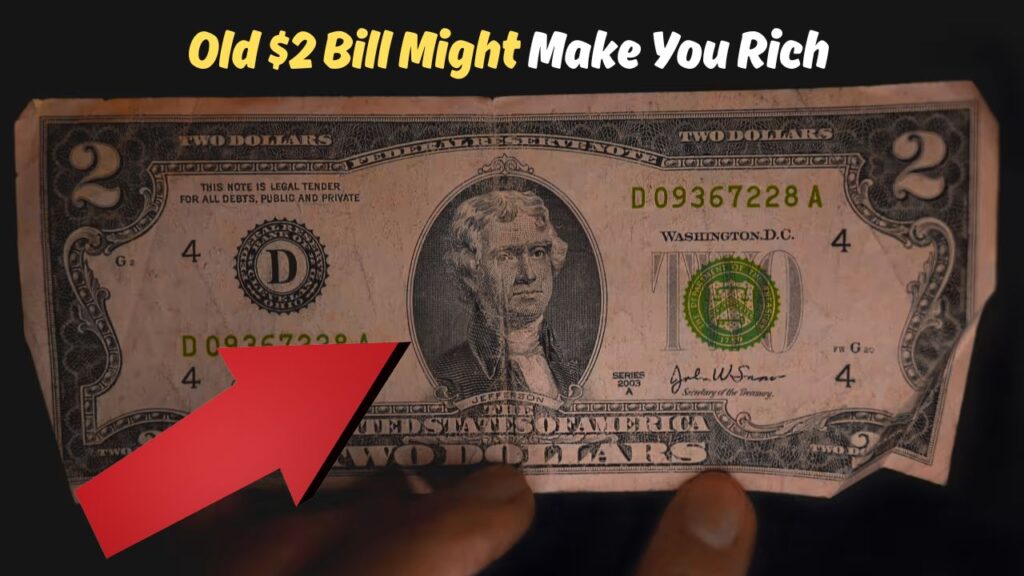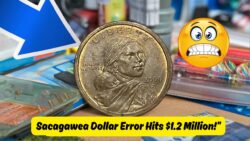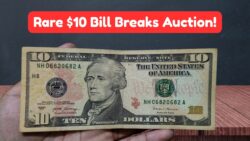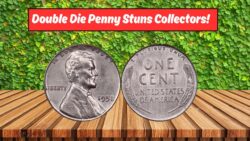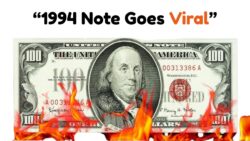$2 Bill – What if the worn-out $2 bill hiding in your old wallet or drawer is actually worth thousands of dollars? Sounds unbelievable, right? But it’s true! Collectors across the U.S. are willing to pay up to $20,000 for rare 1976 $2 bills — especially if they’re in pristine condition or have certain errors or features. So before you toss away that forgotten piece of currency, here’s everything you need to know.
Why the 1976 $2 Bill Is Special
The United States reissued the $2 bill in 1976 to commemorate the Bicentennial of American Independence. It featured Thomas Jefferson on the front and the signing of the Declaration of Independence on the back — making it visually distinct and historically significant.
Key reasons for its popularity among collectors:
- Released during America’s 200th birthday celebration.
- Unique back design showing John Trumbull’s painting of the signing.
- Limited circulation, making uncirculated versions more rare.
- Some bills contain printing errors or unique serial numbers.
How Much Is a 1976 $2 Bill Really Worth?
Most regular 1976 $2 bills are still worth… $2. But certain versions are far more valuable.
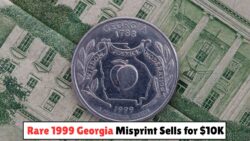 This 1999 Georgia Quarter With Misprint Just Hit $10,000 at Auction – Still in Circulation!
This 1999 Georgia Quarter With Misprint Just Hit $10,000 at Auction – Still in Circulation!
Here’s a breakdown of what influences the price:
| Feature/Condition | Approximate Value (USD) |
|---|---|
| Circulated (worn) | $2–$5 |
| Uncirculated (crisp) | $10–$30 |
| Star Note version | $80–$500+ |
| Error Bill (misprint) | $500–$3,000+ |
| Unique serial number (e.g., 00000001) | $1,000–$15,000+ |
| High-grade + unique serial/error | Up to $20,000 |
As you can see, if your $2 bill has a star symbol, a misprint, or a low or fancy serial number, you could be holding a fortune.
What Is a “Star Note” and Why Is It Valuable?
A star note is printed to replace a misprinted bill during the production process. These notes are marked with a small “★” at the end of the serial number. They’re printed in smaller quantities, making them rare and highly collectible.
What makes star notes even more valuable:
- Lower printing batches.
- Rarer in high grades (e.g., MS-66 or better).
- Combined with unique serials or errors.
If you have a 1976 $2 bill with a star at the end of the serial number, it’s worth checking with a currency expert or auction house.
Valuable Serial Numbers to Look For
Some collectors obsess over specific serial number patterns. Here are examples that could fetch thousands of dollars:
- Solid numbers (e.g., 22222222)
- Low numbers (e.g., 00000001 to 00000099)
- Ladders (e.g., 12345678)
- Palindromes (e.g., 12344321)
- Repeaters (e.g., 48484848)
- Binary (only 1s and 0s)
- Birthday numbers (e.g., 07041776 – U.S. Independence Day)
So even if your bill seems plain, that serial number might be your golden ticket.
Red Flags and Authentication Tips
Before you jump to conclusions, be sure the note is:
- Genuine (not a modern reproduction or novelty).
- From the 1976 series (look at the date near Jefferson’s portrait).
- Not damaged (heavy folds, writing, tears reduce value).
- Stored well (plastic sleeves or holders help maintain condition).
A genuine high-value note should ideally be:
- Graded by a third-party service like PCGS or PMG.
- Photographed with serial numbers clearly visible.
- Compared with online databases or auction listings.
Where to Sell or Appraise a Rare $2 Bill
Got something promising? Here are the best options to evaluate and sell:
- eBay: Thousands of listings; use to compare prices.
- Heritage Auctions: Top-rated auction house for rare currency.
- GreatCollections: Trusted coin and currency auctioneer.
- Local coin dealers: Can help identify condition and authenticity.
- Currency forums: Post images and get opinions from seasoned collectors.
Tip: Always get multiple quotes before selling a bill that might be rare.
Real-Life Examples of $2 Bill Jackpot Sales
- In 2023, a 1976 $2 star note with a low serial number sold for $18,400 at auction.
- A collector paid over $6,000 for a ladder serial note (12345678) in uncirculated condition.
- A double-printed $2 error note from 1976 fetched nearly $3,700 on eBay.
These aren’t rare cases — they’re proof that certain $2 bills are in high demand.
How to Protect Your Valuable Notes
If you believe your 1976 $2 bill could be valuable:
- Don’t fold it or carry it in your wallet.
- Place it in a currency sleeve or acrylic holder.
- Avoid direct sunlight or moisture.
- Get it graded by a professional company for better resale.
Check that old wallet, your grandma’s drawer, or even between old book pages. That forgotten $2 bill could be a hidden treasure. With the right serial number or features, a plain-looking piece of currency could turn into a small fortune overnight.
Before you spend it or dismiss it — take a second look. You just might be $20,000 richer.
FAQs
1. What makes a 1976 $2 bill valuable?
A rare serial number, star note, printing error, or mint condition can increase its value significantly.
2. How do I know if my $2 bill is a star note?
Look for a ★ symbol at the end of the serial number on the bill.
3. Where can I sell my 1976 $2 bill?
Try eBay, Heritage Auctions, GreatCollections, or local coin/currency dealers.
4. Are all 1976 $2 bills valuable?
No. Most are worth only face value unless they have rare features or are uncirculated.
5. Can I still spend a 1976 $2 bill at stores?
Yes, it’s legal tender — but spending it could mean losing a potentially valuable collectible!

